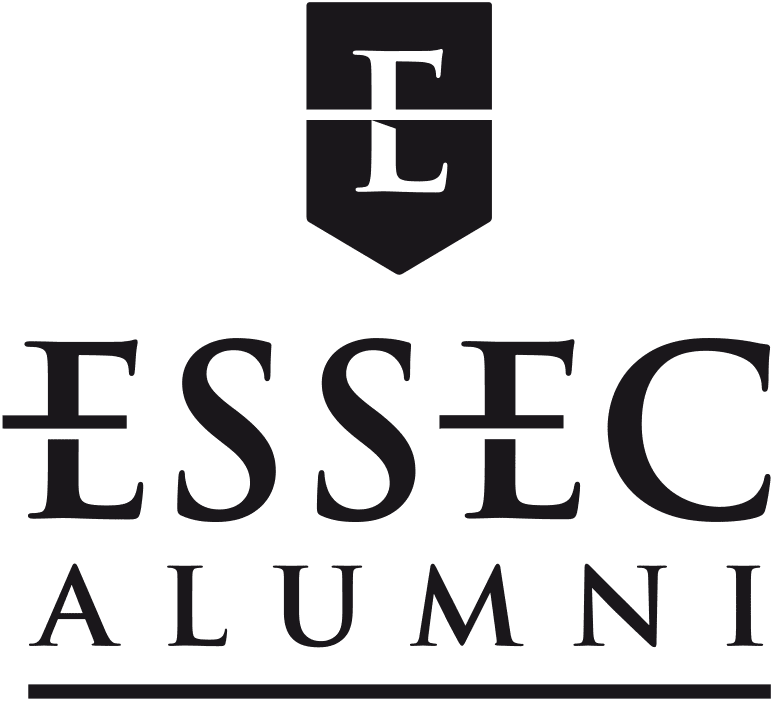Reflets Magazine #154 | What narrative for sustainable transformation?
In Reflets #154, Cédric Baecher (E00), a partner and co-leader of Wavestone’s Practice Sustainability initiative, and Marie-Claire Daveu, Chief Sustainability and Institutional Affairs Officer of Kering Group, use the example of the luxury industry to reflect on the narrative to be adopted regarding the issue of sustainable transformation. How can teams be brought on board in-house? And how can the initiatives undertaken be made visible from the outside? Here’s a free extract of the article. If you’d like to read the next editions, sign up now!
Luxury Sector: A Responsibility Apart
Because of its social and economic weight,1 its strong growth momentum and its global influence, the luxury sector is unique in that it carries a particular responsibility in terms of corporate social impact and, with it, a very real duty to set an example when it comes to sustainable transformation. At the instigation of François-Henri Pinault, in 2005 Kering began to position itself as a pioneer in speaking about key CSR issues identified as being determining factors in the group’s strategy and success. With the firm conviction that “luxury and sustainable development go hand in hand”, and that companies shouldn’t wait to achieve perfection before taking a stance and rallying players broadly across the sector to experiment and progress together.
Sustainable transformation relies on three key factors: 1) Governance (in the organisational sense, not leadership); 2) Expertise (for the company’s credibility, which relies on its mastery of the topics involved); 3) Communication, which means the key issues must be identified and linked together under a common theme that is understood by all.
Thus, from 2013, Kering created (within its sustainable development team) a specific position to deal with internal and external communication, construct a base of straightforward, transparent information (taking care not to promise too much), monitor and adapt the narrative as required, and maintain its consistency and legibility. From the Kering narrative we can highlight two main requisites. Firstly, the need for partnerships and collective work. Indeed, no single entity, however powerful, can single-handedly change the economic paradigm of an entire industry. Everyone must take their share of responsibility, make their own contribution and share their solutions to encourage synergies and speed up wide-scale change. Examples: The Fashion Pact, the Watch & Jewellery Initiative 2030, etc. Secondly, compatibility between ethics and performance. In a world that’s increasingly aware of the need to “protect” resources, the corporate role is also about the appropriate redistribution of value, taking long-term performance into consideration as well as the planet’s inherent limitations and the expectations of society at large.
Transformation at the Narrative’s Core
Communicating on the question of sustainable transformation reminds us just how important semantics can be. The challenge is to profoundly change the company’s business model, in other words, the way in which it generates and distributes value. The narrative must focus on this notion of transformation and all that it means in terms of goals, the complexity of implementation and the long-term commitment of all players and professions, throughout the value chain. For Kering, it’s about “shaping the luxury industry of the future”, a collective venture that relies on a collective, long-term effort and involves a broad diversity of stakeholders.
The narrative must be supported by high ambitions that motivate. It must therefore emphasise the notion of continuous improvement in order to stimulate progress, but must also explain in transparent terms what isn’t yet working, and why. There’s no incompatibility between humility and ambition, on the contrary. Transformation requires innovation2 in several forms (technical, social, economic, etc.) and inevitably takes place in a number of stages that must be explained with the acknowledgement that “it cannot all be done at once”.3
As a general rule, Kering begins by communicating on the facts, to strengthen the group’s credibility on the sustainable transformation front. In 2015, for example, Kering developed a pioneering reporting and decision-aid tool, called EP&L (Environmental Profit & Loss), the methodology of which is freely available and aims to gauge and quantify the environmental impacts of activities present throughout the supply chain.
Varying the Content to Reach a Wide Audience
The sustainable transformation narrative must be delivered at different levels to satisfy a wide diversity of audiences and expectations, be they in-house (employees, whether or not they feel concerned) or outside the company: “Technical” content for specialists (shareholders, academic experts, specialised media, etc.), “informative”, possibly amusing content for the general public, 5 and so on. Communication about sustainable transformation can require a degree of shape-shifting and therefore requires deep knowledge of the rules and codes of each community (NGOs, investors, etc.).
To make the narrative easier to understand and hence increase its impact, it appears crucial to highlight: 1) Clear links between the company’s activities and the identified challenges (for example, continuity of business vs long-term availability of water, raw materials, biodiversity and other natural resources; 2) Concrete facts and measures taken to provide solutions. For the second point, we could mention for example Kering’s promise6 to restore by 2025 a million hectares of farmland and pastures used in the supply chain (with the Regenerative Fund for Nature created in association with the NGO Conservation International).
Clear explanations are essential, even when speaking to experts, because of the evolution and increased interconnection between current reference frameworks. As an example, let’s take the recent publication of the new SBTi7 “FLAG” methodology, and the gradual widening of the field of application of science-based goals, which are no longer limited to mitigating climate change but include biodiversity erosion, hence encouraging collaboration.
In addition, Kering convey their sustainable transformation message via an in-house network of experts who participate in various conferences,8 international initiatives9, academic partnerships10 and joint projects with NGOs and civil society players.
Embody, Inspire, Create the Desire to Explore
The sustainable transformation narrative must of course have an “inspirational” component, especially when targeting younger generations and creative talents, to spark in them a desire to be part of the new, tangible reality of the company and its stakeholders. Audiovisual tools and social media play a decisive role here, to provide a “lively” overview of the company’s strategy, encouraging a spirit of emulation and the acknowledgement of a job well done.
For over ten years now, Kering has invested in the production of a number of films and other media intended for sharing, conveying, illustrating and embodying11 the company’s vision and sustainable transformation narrative. They contain accounts, interventions and discussions (with experts and non-experts), an essential component in an argument that carries weight, contains hard facts and accommodates the cultural particularities specific to each geographical area. The In Conversation With series provides an opportunity to invite experts and personalities12 to discuss topics that make the link between luxury, fashion and sustainable development. Since 2023, the Fashion Our Future podcast has invited the public to question consumption habits and think about the relationship between fashion and the planet, through key topics such as traceability, the circular economy, new materials, ethics, etc.
Last but not least, it is vital to adapt the narrative and content to accommodate the latest communication platforms and evolutions in the expectations of the target audience. In pragmatic terms, this means giving priority to content that is short, factual, visual and meaningful, for maximum overall impact. (As an example, Kering makes use of the WeChat social network in China.) The general public is particularly interested in concrete measures that are directly linked to the company’s products and markets.
There are of course multiple obstacles: saturation of communication networks, the need to prioritize topics in order to be heard and stay one step ahead, the permanent challenge of avoiding greenwashing (drawing attention without compromising on content credibility), discouraging zapping (retaining audience attention without obscuring the complexity of the issues), the need to educate on sustainability topics (explaining clearly the outcomes and impacts of tightened obligations), etc. Indeed, the immense challenge of sustainable transformation has to be met on the communication front too!
1 1,500 billion euros in 2023, according to Fondazione Altagamma and Bain & Company.
2 Kering runs a number of sustainable innovation hubs and labs (materials, textiles, jewellery, etc.).
3 Certain target timescales extend for several years. For example, Kering has not yet achieved its goal of transforming tanning processes to make them entirely free from heavy metals. This is due to technical difficulties, the challenge of acquiring the required new technologies and the need to define a new business model that is both realistic and robust in the long-term.
4 CO2 emissions, water consumption, air pollution, land use, waste production, etc.
5 For example, Kering has developed a social media Memory game on the topic of sustainable materials.
6 Other examples include the restoration of habitats occupied by mining installations and (with the help of the Materials Innovation Lab) diversification of the materials used by the group, in order to avoid monoculture practices and globally increase agricultural resilience.
7The collective SBTi (Science Based Targets initiative) was launched in 2015 by the CDP (Carbon Disclosure Project), the United Nations Global Compact framework, the WRI (World Resources Institute) and the WWF (World Wild Fund for Nature). Goal: to support businesses in their decarbonisation efforts by proposing, for example, methods that are in line with the international climate commitments of the Paris Agreement. In 2023, the SBTi unveiled a reference framework, FLAG (Forest Land and Agriculture) to achieve greater accuracy in carbon accounting for activities relating to the exploitation of forests, soils and farmland; besides emissions, carbon sequestration is taken into account, to calculate net emissions. The aim is to encourage companies to publicly commit to zero deforestation by 2025, across their value chain.
8 For example: ChangeNow, Biofabricate summit, etc.
9 For example: the Kering Generation Awards, last held on 16 October 2023 at the Pudong Art Museum during Shanghai Fashion Week, which focused on three aspects of the circular economy: materials, product design and business models.
10 For example: French Fashion Institute, University of Singapore, Tsinghua University, etc.
11 A film produced in 2012, for example, showed a group of teenagers in the Kering offices, handling materials used by the group’s different branches. Another, filmed in French Guyana in 2019, described a programme put together by local players for the supply of responsible gold and the re-greening of mining sites.
12 For example, Hiraki Mori (French-Japanese top model and influencer).
Translation of an article published in Reflets Magazine #151. Special offer: read the issue (in French).
Get the next issues (in French).
Picture: © AdobeStock

Comments0
Please log in to see or add a comment
Suggested Articles



